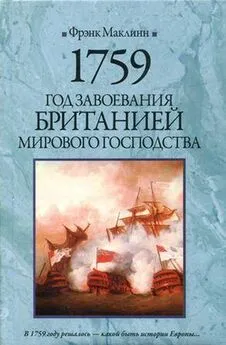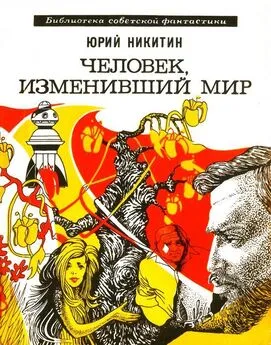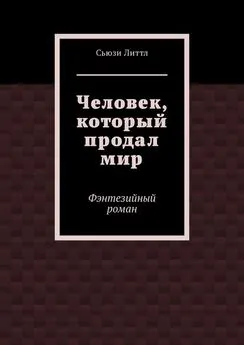Фрэнк Маклинн - Чингисхан. Человек, завоевавший мир
- Название:Чингисхан. Человек, завоевавший мир
- Автор:
- Жанр:
- Издательство:АСТ
- Год:2019
- Город:Москва
- ISBN:978-5-17-095186-4
- Рейтинг:
- Избранное:Добавить в избранное
-
Отзывы:
-
Ваша оценка:
Фрэнк Маклинн - Чингисхан. Человек, завоевавший мир краткое содержание
Чингисхан. Человек, завоевавший мир - читать онлайн бесплатно ознакомительный отрывок
Интервал:
Закладка:
1659
Fennell, Crisis pp. 45–51.
1660
Fennell, Crisis 17–19; Martin, Medieval Russia pp. 66–70, 81–88, 101–103, 106–107, 121–122, 126, 128.
1661
Lazarev, Russian Icon pp. 47–48, 53–56, 67; Valentin L. Ianin, 'Medieval Russia,' in Persie, Cambridge History of Russia I pp. 188–210; Riasanovsky & Steinberg, History of Russia pp. 75–76; Martin, Medieval Russia p. 126.
1662
Mitchell & Forbes, Chronicle of Novgorod, p. 25; Martin, Medieval Russia pp. 114–115.
1663
Paul Bushkovitch, 'Urban Ideology in Medieval Novgorod: An Iconographic Approach,' Cahiers du monde russe et sovietique 16 (1975) pp. 19–26.
1664
Martin, Medieval Russia p. 123.
1665
Christian, History of Russia I p. 364.
1666
«Застой». — Прим. пер .
1667
Riasanovsky, History of Russia 1993 ed.) p. 42.
1668
Bretschneider, Mediaeval Researches I p. 297; II p. 71.
1669
Barthold, Histoire des turcs pp. 88–91; Golden, Nomads and their Neighbours; Golden, Turkic Peoples.
1670
Robert L. Wolff, 'The Second Bulgarian Empire: Its Origins and History to 1204,' Speculum 24 (1949) pp. 167–206; Paul Stephenson, Byzantium's Balkan Frontier: A Political Study of the Northern Balkans, 900–1204 (Cambridge 2000); Spinei, Romanians.
1671
Monumenta Germaniae Historiae, Scriptores 21 (1869) p. 216; A. Bruce Boswell, 'The Kipchak Turks,' Slavonic Review 6 (1928) pp. 68–85.
1672
Vasary, Cumans and Tatars pp. 4–7, 13–56; Christian, History of Russia I p. 361; Pelliot & Hambis, Campagnes pp. 43–114.
1673
Chaliand, Nomadic Empires p. 52.
1674
Christian, History of Russia I p. 358.
1675
Vernadsky, Source Book for Russian History I p. 31.
1676
Jackson & Morgan, Rubruck p. 70.
1677
Peter B. Golden, 'The Qipchaqs of Medieval Russia,' in Seaman & Marks, Rulers from the Steppe pp. 186–204 (at pp. 197–198).
1678
For a good summary of the Polovtsian raids and the countercampaigns see Vernadsky, Kievan Russia pp. 86–90, 222–225, 235–238.
1679
For the complex politics of Chernigov and Igor's role see Dimnik, Dynasty of Chernigov pp. 108–240.
1680
Nabokov, Song of Igor's Campaign 11. 93–112.
1681
Nabokov, Song of Igor's Campaign 11. 153–171.
1682
These events are described in a number of sources: Mitchell & Forbes, Chronicle of Novgorod p. 32; Cross & Sherbowitz-Wetzor, Russian Primary Chronicle; S. A. Zenkovsky, Medieval Russian Epics pp. 137–138; 'The Lay of Igor's Campaign,' in Fennell & Obolensky, A Historical Russian Reader pp. 63–72; Martin, Medieval Russia p. 131.
1683
Nabokov, Song 11. 733–834.
1684
Halperin, Russia and the Golden Horde p. 15.
1685
T. S. Noonan, 'Rus, Pechenegs and Polovtsy: Economic Interactions along the Steppe Frontier in the Pre-Mongol Era,' Russian History 19 (1992) pp. 301–327.
1686
Также Мстислав Удатный. — Прим. пер .
1687
Mitchell & Forbes, Chronicle of Novgorod p. 65.
1688
Mitchell & Forbes, Chronicle of Novgorod p. 64. For more on Russian ignorance of the Mongols see Grekov & Iakoubovski, Horde d'Or pp. 54, 1901–91; Bretschneider, Mediaeval Researches I p. 296; Bezzola, Mongolen in abendlandischer Sicht p. 41.
1689
J. Fennell, 'The Tatar Invasion of 1223,' Forschungen zur osteuropaischen Geschichte 27 (1980) pp. 18–31. Fennell, like many other writers, places the Battle of Kalka in the year 1222, which the best scholarship has now established as the true date. If the battle of Kalka was indeed fought in 1223, there is an entire twelve-month black hole to be accounted for, as our detailed narrative has made clear.
1690
Fennell, Crisis p. 65.
1691
Grekov & Iakoubovski, Horde d'Or p. 193.
1692
Fennell, Crisis p. 66.
1693
Chambers, Devil's Horsemen pp. 17–30.
1694
Также Ганибек. — Прим. пер .
1695
Gabriel, Subotai p. 99. Vernadsky (Kievan Russia p. 237) says that Mtsislav the Bold 'succeeded in defeating a detachment of Mongol troops' but does not mention that they had been left behind as a suicide squad (suggestio falsi!).
1696
Munro, Rise of the Russian Empire p. 81.
1697
For the entire Kalka campaign the best guide is Nicolle, Kalka.
1698
Так у автора. Согласно российской историографии, дата битвы — 31 мая 1223 года. — Прим. пер .
1699
Rachewiltz, In the Service p. 132.
1700
Mitchell & Forbes, Chronicle of Novgorod pp. 65–66; Fennell, Crisis p. 91.
1701
Gabriel, Subotai p. 100.
1702
Nicolle, Kalka p. 74; Martin, Medieval Russia p. 132.
1703
Это имя дает автор. Также Плоскыня. — Прим. пер .
1704
Grekov & Iakoubovski, Horde d'Or p. 194; Bretschneider, Mediaeval Researches I p. 297.
1705
Nicolle, Kalka pp. 76–82.
1706
Nicolle, Kalka pp. 75.
1707
IAA III p. 224.
1708
Nicolle, Kalka p. 74.
1709
Jackson, Mongols and the West p. 49.
1710
Все летописные цитаты даны по тексту: «Повесть о битве на Калке, и о князьях русских, и о семидесяти богатырях». Тверская летопись. Сборник. М., 1990. Библиотека «Халкидон». Halkidon2006.Orthodoxy.ru. — Прим. пер .
1711
Mitchell & Forbes, Chronicle of Novgorod p. 66; Zenkovsky, Medieval Russian Epics p. 195.
1712
For a good summary of the campaign and its consequence see Grousset, L'empire mongol pp. 517–520.
1713
For a description of the lands the Mongols traversed on the way to Samara see Dawson, Mongol Mission p. 131; Haxthausen, Russian Empire II pp. 70, 223; Clarke, Travels p. 47.
1714
I. Zimonyi, 'The First Mongol Raid against the Volga Bulgars,' in Jarring & Rosen, Altaic Papers pp. 197–204 (at pp. 197–199); A. M. Khalikov, Mongols, Tatars p. 24 (I am grateful to Dr Malcolm Chapman for translations of the relevant sections of this source.).
1715
The correct version (in my view) is in d'Ohsson, Histoire, I p. 346 and Grousset, Empire of the Steppes p. 247. Ibn al-Athir implies that the Mongol defeat at Samara Bend was serious (1AA III p. 224) and is backed by Jackson, Mongols and the West p. 39. For other views see Barthold, Four Studies I p. 41 and de Hartog, Mongol Yoke p. 25. Chambers, Devil's Horseman p. 31 is adamant that the story of a serious Mongol reverse is lying Bulgar propaganda.
1716
Encyclopedia of Islam (2nd ed.) VIII pp. 895–898.
1717
Rachewiltz, In the Service p. 19.
1718
JR II pp. 1102–1103; Chambers, Devil's Horsemen p. 31; Rachewiltz, In the Service pp. 19–20; Hartog, Genghis p. 123. For a judicious analysis of Jebe see Rachewiltz, Commentary pp. 533–538.
1719
Liddell Hart, Great Captains Unveiled.
1720
George Lane, 'The Mongols in Iran,' in Daryaee, Iranian History pp. 243–70 (at p. 248); d'Ohsson, Histoire I p. 323.
1721
IAA III p. 215.
1722
Rachewiltz, In the Service pp. 95–96.
1723
Asimov & Bosworth, History of Civilizations iv part 2 pp. 510–512.
1724
Devin DeWeese, 'Stuck in the Throat of Chingiz Khan: Envisioning Mongol Conquest in some Sufi Accounts of the Fourteenth to the Seventeenth Centuries,' in Pfeiffer & Quinn, Post-Mongol Central Asia pp. 23–60 (at pp. 32–33, 52).
1725
Devin DeWeese, 'Stuck in the Throat of Chingiz Khan: Envisioning Mongol Conquest in some Sufi Accounts of the Fourteenth to the Seventeenth Centuries,' in Pfeiffer & Quinn, Post-Mongol Central Asia pp. 46–49.
1726
Hamid Algar, 'Some Observations on religion in Safavid Persia,' Iranian Studies 7 (1974) pp. 287–293; Devin DeWeese, 'The Eclipse of the Kubraviyah in Central Asia,' Iranian Studies 21 (1988) pp. 45–83; Lawson, Reason and Inspiration p. 303.
1727
DeWeese, 'Stuck in the Throat,' loc. cit. pp. 42–43, 46–47.
1728
Kohn, Daoism; Silvers, Taoist Manual.
1729
Vincent Goosaert, 'Quanzhen,' in Pregadio, Encyclopedia of Taoism II pp. 814–820; Komjathy, Cultivating Perfection.
1730
Вторыми автор приводит вторые китайские имена (даосские имена соответственно — Ма Данъян, Тань Чанчжэнь, Лю Чаншэн, Цю Чан Чунь. — Прим. пер .
1731
Даосские имена соответственно — Хао Гуаннин, Ван Юйян, Сунь Циннцзин. — Прим. пер .
1732
Despaux & Kohn, Women in Daoism pp. 142–148.
1733
Eskildsen, Early Quanzhen Taoist Masters pp. 10. 12, 18.
1734
For a full suvey of Chang Chun's career see Rachewiltz, In the Service pp. 208–223.
1735
Tao, Jurchen pp. 106–107.
1736
For these arguments see Komjathy, Cultivating Perfection.
1737
There is a huge literature on alchemy and Quanzhen. Representative titles include Pregadio, Awakening to Reality; Pregadio, Chinese Alchemy; Mu, Neidan.
1738
Rachewiltz, In the Service p. 143.
1739
Arthur Waley, Travels of an Alchemist pp. 44–45.
1740
Edouard Chavannes, 'Inscriptions et pieces de chancellerie chinoises de l'epoque mongole,' T'oungPao 9 (1908) pp. 297–428 (atp. 399). Another version can be found in Bretschneider, Mediaeval Researches I pp. 37–39.
Читать дальшеИнтервал:
Закладка:



![Ксения Чепикова - Человек, научивший мир читать [История Великой информационной революции]](/books/1059757/kseniya-chepikova-chelovek-nauchivshij-mir-chitat-ist.webp)



